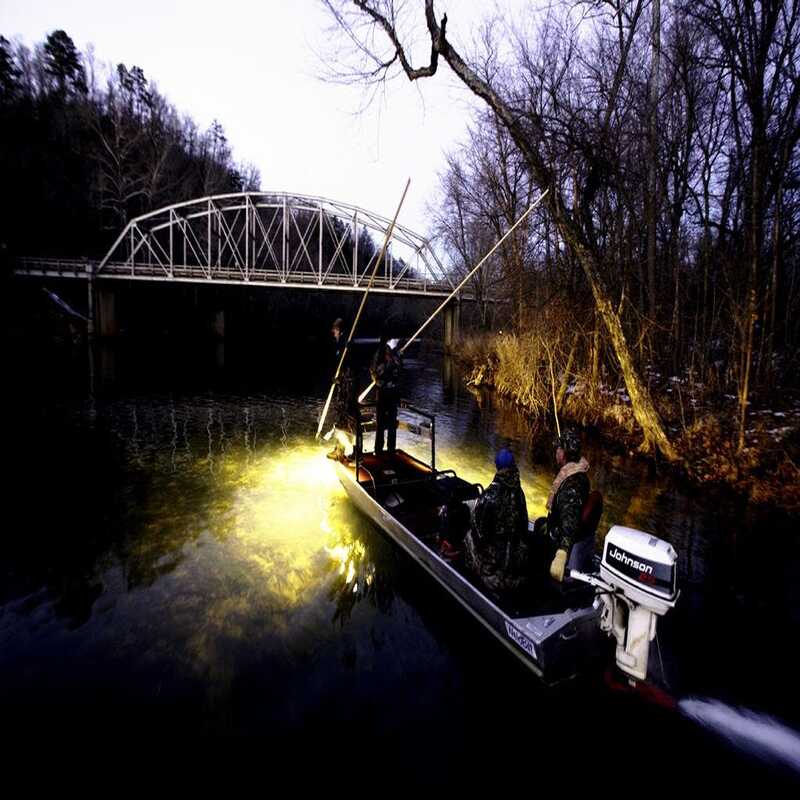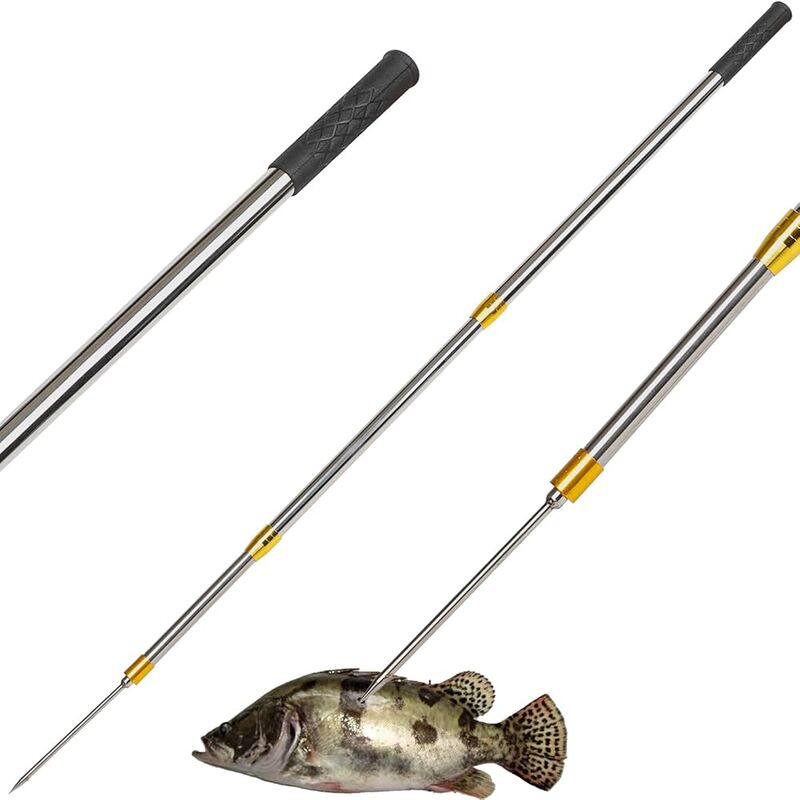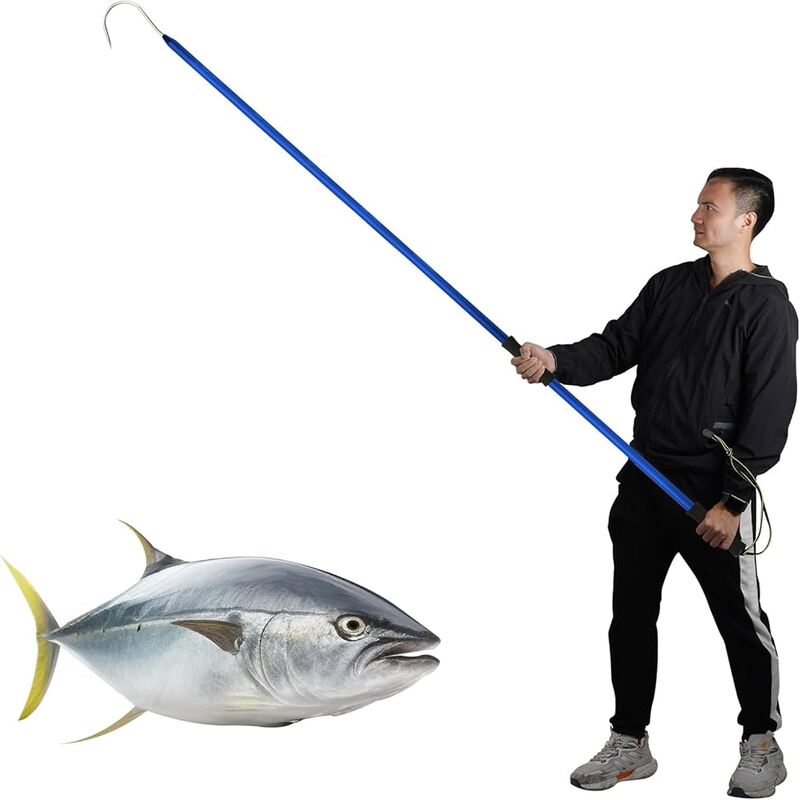Introduction to Gigging Fishing
Gigging fishing is a compelling and traditional method of fishing that dates back centuries. This distinctive fishing technique primarily involves spearing fish or frogs using a multi-pronged spear called a gig. Unlike conventional fishing methods that rely on bait and lines, gigging allows fishermen to target their prey directly. This hands-on approach provides an exhilarating and interactive experience. Fishing enthusiasts, both experienced and novices, appreciate gigging for its unique challenges and rewards.
Across various regions, particularly in the southern United States, gigging fishing remains a popular pastime. Communities often celebrate gigging through local events and competitions. These events foster community spirit and preserve cultural traditions. Interestingly, gigging fishing is not just a leisure activity; it also serves as a method to control certain fish populations. Therefore, it contributes significantly to maintaining ecological balance.
Additionally, gigging offers a way for individuals to bond with nature. It requires potential fishers to immerse themselves in the water, observe their surroundings, and develop a keen sense of timing. Participants often find the experience meditative and fulfilling. As gigging integrates historical techniques with the thrill of outdoor activities, it continues to captivate many.
The Basics of Gigging Fishing
Required Equipment
To get started with gigging fishing, it’s essential to have the right equipment. The primary tool used in gigging is the gig itself. Gigs usually have three or five prongs, but some include more for specialized fishing types. These prongs are sharp and barbed, making it easier to impale and hold onto the fish. Gigs come in different sizes and materials, which may influence effectiveness. The handles of gigs are typically made from materials like wood or aluminum, depending on personal preferences and intended use.
Another crucial piece of equipment is a powerful light source. Effective illumination is vital for gigging, especially at night when visibility is low. Headlamps, handheld spotlights, and boat-mounted lights are popular choices among giggers. Additionally, many prefer LED lights due to their brightness and energy efficiency. Furthermore, a sturdy boat is often necessary to maneuver through water bodies smoothly. Boats equipped with shallow draft designs allow giggers to reach areas where fish are more likely to be found.
Waders provide another layer of utility, particularly when gigging in shallow waters. They protect from the cold and wet conditions, improving comfort. These pieces collectively form the basic equipment for a successful gigging venture. Along with proper tools, adequate knowledge and preparation are equally essential.

Appropriate Fishing Areas
Choosing the right fishing area is paramount to the success of a gigging expedition. Typically, gigging happens in shallow creeks, rivers, or coastal inlets. These environments often harbor abundant fish populations, making them ideal locations for gigging. Clear waters are preferable since they improve visibility and make it easier to spot prey. Seasonal changes can also influence the best fishing areas. During spawning seasons, fish often move to shallower waters, providing excellent opportunities for gigging.
Certain species are more commonly targeted while gigging, such as flounder, suckers, and various types of gar. The bio-diversity of a specific location dictates the species available for fishing. Moreover, the bottom terrain plays a significant role. Sandy or muddy bottoms are generally more favorable, as they allow easier movement and better visibility. Tidal patterns can influence fish behavior, and understanding these patterns can prove advantageous.
When scouting for appropriate areas, many fishermen often rely on local knowledge and experience. Communities with gigging traditions usually pass down valuable information regarding the best spots and times of the year. Online forums and local fishing reports also provide helpful tips. Therefore, combining local wisdom and personal research increases the likelihood of a fruitful gigging experience.
Techniques and Tips for Successful Gigging
Proper Spearing Technique
Mastering the spearing technique is crucial for anyone looking to excel in gigging fishing. Accuracy and timing are the two most essential components of a successful strike. Unlike traditional fishing, where waiting for the fish to bite is standard, gigging requires immediate action. Fishers must adopt a focused and steady stance. Too much movement can scare away the fish, while being too slow might miss the opportunity altogether.
When spotting a fish, it’s important to approach calmly and quietly. This minimizes disturbances and avoids alarming the fish. Holding the gig at a slight angle instead of vertically can also increase accuracy. Giggers often find striking the fish behind its eyes more effective. The aim should be precise, targeting vital areas to ensure a clean capture. Practicing the spearing motion in a controlled setting can help develop these skills. Proper training and constant practice make a noticeable difference.
Seasoned giggers also recommend following through with the strike, as this ensures the prongs penetrate fully. Once the fish is impaled, it’s crucial to lift it quickly but steadily to avoid losing it. Learning to read the fish’s body language can offer clues about its next move. These insights often come with experience. Therefore, practicing various techniques improves not only accuracy but also confidence.
Timing and Patience
Successful gigging fishing involves more than just a keen eye; patience and timing are indispensable virtues. Unlike other forms of fishing, gigging often requires a significant amount of waiting. Giggers must remain still and observant for extended periods. This period of inactivity can be challenging, especially in unfavorable weather conditions. Nonetheless, patience usually pays off, making the capture all the more rewarding.
The best times for gigging often vary based on factors such as the season, time of day, and tidal patterns. Nighttime is generally considered optimal since many fish species are more active during these hours. Improved visibility offered by artificial lighting makes spotting fish easier. However, daytime gigging can also be productive, particularly in clear, shallow waters. Understanding local fish behavior patterns can aid in determining the best times.
Patience also extends to dealing with potential setbacks during gigging. There will be instances where missed strikes and accidental disturbances occur. Remaining patient and persistent often leads to success. Furthermore, spending time observing the water and environment sharpens concentration. It also enhances the ability to predict fish movements. By developing patience and mastering timing, giggers set the stage for a rewarding and efficient fishing experience.

Ecological and Cultural Significance
Maintains Ecological Balance
Gigging fishing plays a significant role in maintaining ecological balance. Overpopulation of certain fish species can disrupt local aquatic ecosystems. Through controlled gigging, fishermen help regulate these populations, promoting a more balanced environment. For instance, certain invasive species pose threats to native fish communities. Targeting these species through gigging helps keep their numbers in check, preserving biodiversity.
Additionally, gigging contributes to local conservation efforts by selectively targeting species that are abundant. Unlike some commercial fishing methods, gigging is more sustainable as it allows for targeted fishing. Minimal bycatch is produced, which reduces the impact on non-target species. This selective nature ensures that the aquatic ecosystem remains healthy. It also minimizes the overfishing risks associated with indiscriminate fishing practices. This balance benefits the entire marine food chain.
Educational programs often highlight gigging as a sustainable fishing method. They emphasize its role in conservation and community engagement. Participation in such programs fosters a sense of responsibility among fishermen. They become active stewards of their local water bodies. Understanding and implementing sustainable practices ensures gigging fishing remains a viable and ecologically beneficial activity.
Importance in Local Culture
The cultural significance of gigging fishing cannot be understated. In many parts of the southern United States, gigging is a cherished tradition that spans generations. Family members often pass down their gigging knowledge and techniques, fostering a strong sense of heritage. This cultural transmission enriches communities and keeps traditional practices alive. Many towns host annual gigging events, which serve as important social gatherings.
These events often include competitions, where participants showcase their gigging skills. Winners earn prizes and community recognition. Beyond competition, these gatherings offer an opportunity for families and friends to bond. They collectively celebrate a shared cultural heritage. Storytelling is another significant aspect of these events. Elders recount their experiences, imparting wisdom and captivating younger audiences. Such traditions reinforce communal ties and preserve historical knowledge.
Gigging also intersects with local cuisine. Many regional dishes feature fish caught through gigging, adding culinary significance to the practice. Fish fry events, where community members prepare and share their hauls, are commonplace. They contribute to the communal spirit and enhance the gastronomic landscape. These cultural elements collectively ensure that gigging fishing remains a cherished and relevant tradition.

Potential Challenges and Solutions
Environmental Concerns
Like any outdoor activity, gigging fishing carries certain environmental concerns. Overzealous fishing can lead to the depletion of fish populations, especially in smaller water bodies. Ensuring sustainable practices becomes crucial to avoid long-term ecological damage. Fishermen must be aware of local regulations and adhere to prescribed limits. This ensures balanced and responsible fishing. Regular surveys and studies help in monitoring fish populations. They assist in setting appropriate quotas, which regulate fishing activities better.
Pollution poses another significant challenge. Waters contaminated with pollutants impact fish health and affect the quality of fishing. Giggers need to advocate for cleaner water bodies. Participating in local clean-up efforts demonstrates commitment to environmental stewardship. Educating fellow giggers about environmental ethics can also contribute to conservation. Keeping the water clean ensures healthier fish populations. This benefits both the ecosystem and the fishing experience.
Addressing these concerns requires a combined effort from fishermen, local authorities, and community organizations. Collective action ensures that gigging can continue as a sustainable and environmentally friendly practice. By adopting ethical guidelines, the gigging community helps protect the aquatic environments. They ensure the preservation of this traditional fishing method for future generations.
Legal and Seasonal Regulations
Navigating the legal and seasonal regulations of gigging fishing can be intricate. Different states and regions have distinct rules governing the practice. These regulations are designed to protect fish populations and ensure sustainable fishing. Giggers must familiarize themselves with local laws to avoid legal repercussions. Fishing licenses may be required, and the specific species that can be gigged might be regulated. Violations can lead to significant fines or other penalties.
Seasonal restrictions often coincide with fish breeding periods. During these times, certain areas may be off-limits to protect spawning populations. Adhering to these seasonal restrictions helps ensure the replenishment of fish stocks. These measures ultimately benefit the gigging community by ensuring continued availability of fish. Staying updated on regulatory changes is crucial. Many local fishing departments provide resources and updates on current laws and regulations.
By respecting these rules and regulations, the gigging community demonstrates its commitment to sustainable fishing practices. It also strengthens the relationship between fishermen and regulatory bodies. This collaborative approach ensures the longevity and viability of gigging fishing. Sustainability and compliance pave the way for future generations to enjoy the tradition of gigging.
Conclusion
In summary, gigging fishing offers a unique blend of tradition, skill, and ecological impact. This ancient practice provides an engaging alternative to modern fishing methods. It brings together communities and fosters cultural heritage. However, successful gigging requires proper equipment, techniques, and knowledge of local regulations. Patience and timing play crucial roles in the practice. Moreover, it contributes to ecological balance by targeting specific species.
Understanding and respecting environmental and legal considerations ensure sustainable fishing. This approach benefits both the ecosystem and fishermen. By adhering to ethical guidelines and supporting local conservation efforts, the gigging community enjoys a rewarding experience. They also contribute to the preservation of aquatic habitats. This mindfulness ensures the continuation of this practice for future generations.
Gigging fishing remains a testament to human ingenuity and the desire to connect with nature. It echoes the past while adapting to present challenges. As it continues to evolve, gigging will undoubtedly retain its place as a cherished and respected fishing tradition. This timeless practice embodies a perfect balance between skill, patience, and respect for nature.
